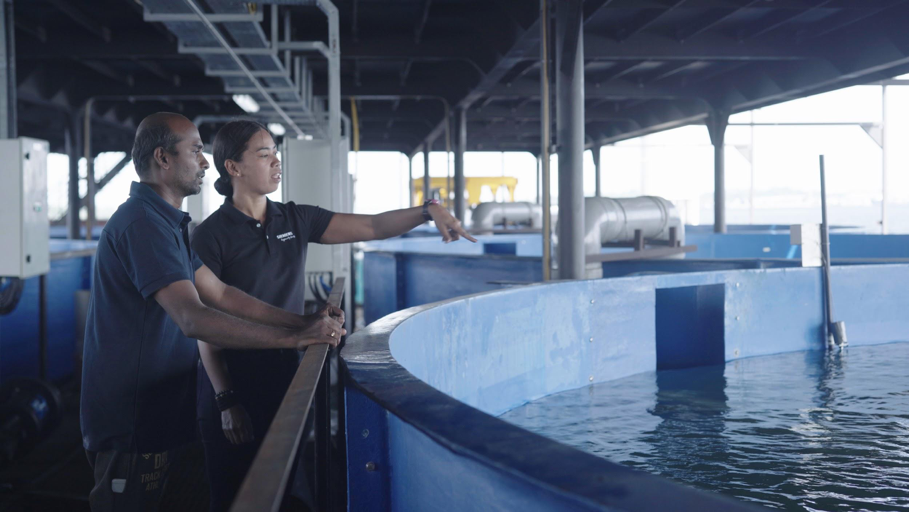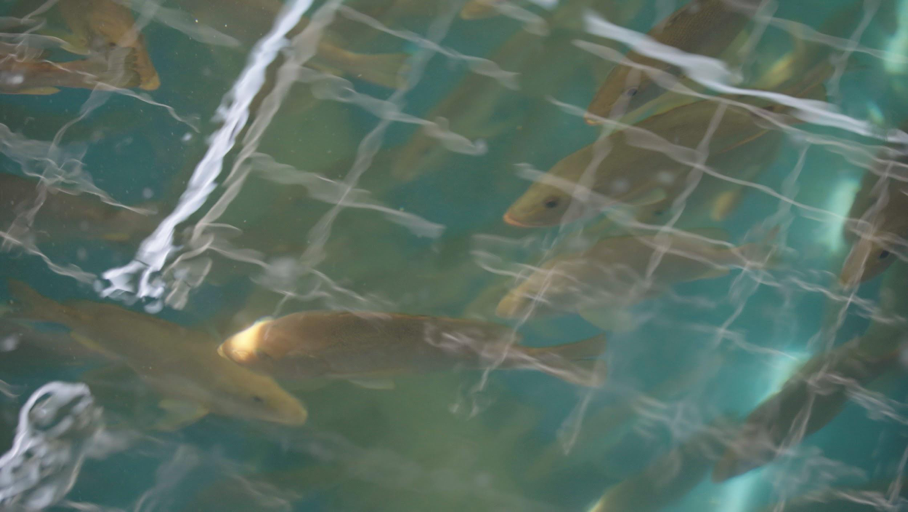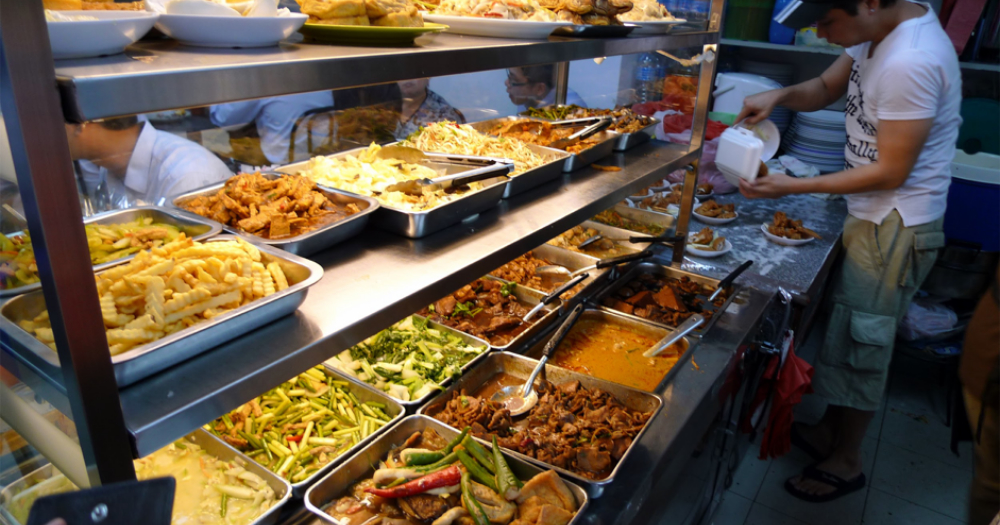“Eh what to eat for lunch today ah?”
“Cai png.”
This is probably one of the top five things every Singaporean will talk about with their colleagues.
Cai png is easily the default meal for Singaporeans; a satisfactory meal of two vegetables and one meat dish typically costs less than a fast food meal.
And if you are not a picky-eater, the permutations of dishes are endless.
Will cai png stay the same?
Thanks to all the cai png stalls, we won’t have to eat grass for real at the end of each month.
You see, it’s quite amazing how cai png uncles and aunties can whip up a plethora of dishes and stay relatively affordable.
So how is this made possible? And will this last forever?
Jeng jeng jeng.
Maybe not.
Impacts of climate change
Singapore imports more than 90 per cent of our food. This makes us vulnerable to the volatilities of the global food market such as supply disruptions and price hikes, which may become more frequent with the effects of climate change.
Climate change, while you probably had enough of these two words by now, is causing unprecedented changes to the physical environment such as faster sea level rise, a greater increase in global temperatures, and more frequent and extreme weather events.
You probably felt it last year when we had our first dry spell in more than five years, followed by a chilly and rainy year-end.
And not forgetting the months of bushfires in Australia exacerbated by climate change. 2019 was the hottest-ever and driest-ever year in Australia.
Such erratic weather patterns disrupt crop yields and livestock production before they become food on the table.
The fact that Singapore imports a majority of ingredients from other countries puts us at risk because a poor harvest in other countries might mean a price hike or in the worst-case scenario, a halt in food imports.
Simple economics.
How extreme weather affects “zhe ge” & “na ge” dishes?
Poultry, vegetables, rice and down to the basic ingredients such as onions have all taken a beating from extreme weather in their home countries.
All the dishes you order at a cai png stall without knowing what they really are except “zhe ge” (this) and “na ge” (that) may taste different, become more expensive or even becoming unavailable if no action is taken.
Just start with one of the most basic ingredients - onions.
Did you know, India -- one of the key exporters of onions in the world -- faced two major onion crises in 2019?
Onion harvests declined as a result of a delay of the monsoon season and, later, excessive rain. The prices of onions skyrocketed by an outrageous 400 per cent in India and the country had to stop its exports.
Imagine your sweet and sour meat without onions. It won’t taste the same even if you are one of those who pick the slices of onion out from the dish.
More recently, monsoon rain arrived a month earlier in Malaysia last year which also led to a price surge for some imported vegetables here. For example, the prices of Japanese cucumbers increased from S$0.40 to about S$1.30.
It’s not just about when the rain comes during the year but also how much rain.
Prolonged and heavy rain can lead to flash floods which in turn affected the global rice prices since 2008, according to the Singapore General Rice Importers Association.
Back then, massive floods in Thailand resulted in a shortage of rice. Other rice-producing countries also curbed exports to ensure self-sufficiency.
While intense rainfalls affect agricultural production, food sources are also affected by prolonged dry periods too.
Fun fact, did you know that high temperatures will cause hens to eat more and drink less water? Consequently, the eggs also become smaller and some chickens die from the heat.
Lesson from these examples? We definitely can’t afford to place all our eggs into one or even a few baskets.
The fate of cai png is in our hands
Singapore's food sources have expanded from 140 countries and regions in 2004 to more than 170 in 2019.
Take eggs, for example.
Currently, 11 source countries have been approved to export eggs to Singapore, they are Australia, Denmark, Japan, Malaysia, New Zealand, Spain, Sweden, South Korea, Thailand, the United States and Ukraine.
Besides finding more food sources, we are also trying to create and strengthen our food security as Singapore aims to locally produce 30 percent of Singapore’s nutritional needs by 2030 (aka 30-by-30).
In 2018, only a small amount of food that we ate here came from our local farms — 13 percent of all the leafy vegetables, nine per cent of all the fish and 24 percent of all the eggs.
To achieve the 30-by-30 vision, the Singapore Food Agency is providing more support to local farms such as funds to integrate climate mitigating technologies and innovations into their operations.
An example is the Singapore Aquaculture Technologies’ (SAT) smart floating fish farm. The fish farm is just a five-minute boat ride from Lorong Halus.
 Photo courtesy of Siemens.
Photo courtesy of Siemens.
 Photo courtesy of Siemens.
Photo courtesy of Siemens.
Supported by Singapore Food Agency’s Agriculture Productivity Fund, the fishes at the fish farm are not reared in the sea but in tanks with a system that helps to control the environmental factors better.
Singapore is also using our high-rise buildings innovatively such as setting up urban vertical farms on the rooftops of car parks where it’s spacious and exposed to the sun.
One of these farms can be found in Ang Mo Kio where a private company Citiponics Farm is growing 4,000kg of vegetables every month.
These leafy greens include lettuce, “nai bai” (dwarf bok choy) and “cai xin” (an Asian green).
Some of the produce are sold at the nearby AMK Hub FairPrice after the harvest.
That’s how we innovate, adapt and overcome our challenges, because food security is a serious matter.
Do your part leh
Now you know that what we eat every day does not come easy and will not come easier in the future, here are some ways you can contribute:
1. Don’t waste food.
2. Support local produce.
3. Bring your own container to tapao.
If you are already doing so, good for you.
Top photo by yumyumformytumtumThe writer of this sponsored article appreciates eating cai png even more, rain or shine.
If you like what you read, follow us on Facebook, Instagram, Twitter and Telegram to get the latest updates.
